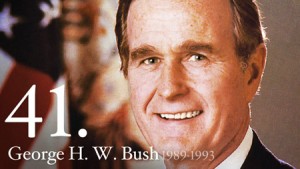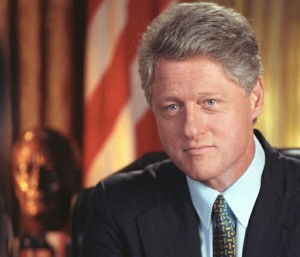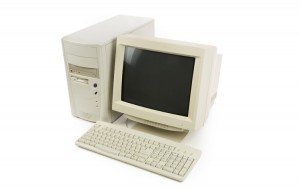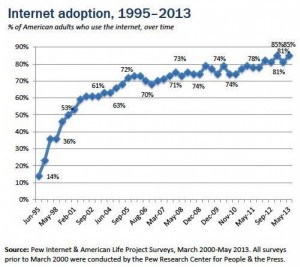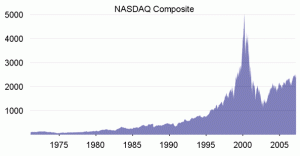America Enters the 1990s
A “New World Order”
The world entered the 1990s with a bang. There were two major developments behind this, the victory of the United States and coalition forces in the 1990 Persian Gulf War, and the dissolution of the Soviet Union in 1991. Both of these foreign policy successes were a shot in the arm for Bush’s Administration, as his approval ratings skyrocketed to 90% 1.
Economic Recession
President George H.W. Bush inherited the economic prosperity of the Reagan years, which rejuvenated the nation. However, by July 1990, the economy fell into a recession. The federal budget deficit increased (despite President Bush’s tax hikes) as the economy contracted and unemployment increased (by 1.8 million workers). The recession ended in March 1991, but the economy was experiencing a “jobless recovery”, where unemployment was stagnant. Further compounding this problem was the popular conception that President Bush “wasn’t doing enough”.
So while President George H.W. Bush had strong accomplishments with regards to foreign policy, the sluggish economy led to his defeat in 1992, when the third-party candidate Ross Perot entered the fray, taking votes away from the incumbent, allowing Governor Bill Clinton of Arkansas to step up to podium. A Centrist Democrat, his party had adopted a platform that diverged from the policies of the past, such as the Great Society and the New Deal. The inauguration of moderate Democrat signaled that a new day had begun in America.
The Information Age
Innovative Technologies
The world was transformed in the 1990s with the advent of new technologies 1. The cutting-edge science and technological developments were a crucial factor in the economic expansion of the 1990s, as workplace productivity (the lifeblood of an economy) increased. Important technologies that were improved and diffused through the 1990s include the personal computer (PC), advances in telecommunications, improved cell phones, software, and the World Wide Web, which connected Americans across the nation to the Internet.
The vast advances in technology augmented the economy, and also had an important impact on America’s financial system. The stock markets (especially the NASDAQ) skyrocketed, which led to widespread prosperity for Wall Street. This prosperity was known as the “Dot-Com Bubble”, and it burst in 2000-2001.
A repetition of the patterns we have seen throughout America’s economic history, technological innovation had a beneficial impact on the American economy overall.
Federal Economic Policies
President Bill Clinton, Congress, and the Federal Reserve all implemented policies which played crucial roles in the economic growth of the 1990s. After the 1994 midterm election, Republicans took control of Congress, following President Clinton’s failed healthcare reform proposal prompted backlash. This divided government led the President to adopt a policy of triangulation, in which the legislature and the executive branch worked together and compromised to achieve legislative successes. Consequently, both President Clinton and Congress enacted a wide array of policies which had important impacts on the American economy in the 1990s 2, 3.
First, taxes were raised on high-income Americans and corporations. The corporate income tax rate increased to 35% for the firms in the top tax bracket, while income taxes increased for the wealthiest 1.2% of taxpayers to the level of 39.6%. Clinton also (through an executive order) extended the tax base for Medicare FICA taxes. These tax hikes probably helped to bring down the deficit. Indeed, by the end of the 1990s, the federal government had a budget surplus (or a very minimal deficit of ~$17 billion, depending on if we count intragovernmental obligations).
Although these taxes were raised, the tax burden was offset somewhat. The federal government expanded the Earned Income Tax Credit (EITC) for low-income families, and also expanded the child tax credit, both efforts to shore up middle-class incomes. After the 1996 elections, capital gains taxes were also reduced.

The federal government eliminated the budget deficit in the late 1990s, through robust economic growth, tax increases, and spending cuts
Second, the level of spending growth was decreased. Discretionary programs were occasionally cut, but usually, spending levels were not decreased in absolute levels.
Third, the NAFTA was enacted. A free-trade zone encompassing the United States, Canada, and Mexico, the treaty promised to stimulate trade and economic activity throughout North America. This policy had important ramifications for America’s economy in the 1990s, and its impacts are still lasting today.
Fourth, the government had a rollback of regulations. This effort was led by Vice President Al Gore (at the right in the picture below), and this initiative was known as Reinventing Government. About 15,000 pages of business regulation were scrapped – leaving the federal regulatory apparatus intact – but allowing greater flexibility for the private economy to function.

The Clinton Administration spearheaded an effort that reduced government expenditures and regulation
Fifth, the government reformed welfare. The traditional AFDC program had a bad reputation of encouraging dependency, the split-up of marriages, increased childbirth levels, and so forth. President Clinton signed the Republican welfare reform bill (PRWORA of 1996) into law in 1996.
Sixth, the federal minimum wage was increased. This minimum wage hike affected 10 million Americans, and was part of Clinton’s campaign agenda in the 1992 election.
As stated earlier, President Clinton was a “New Democrat” 6 who was fiscally moderate and socially liberal. President Clinton emboldened this label throughout his presidency, in particular after the Republicans took control of Congress in 1994 after Clinton’s healthcare reform proposal died. The actions that President Clinton and Congress enacted probably strengthened America’s economy in multiple ways.
The Federal Reserve also had an important (if less noticed) influence in the 1990s. Under the careful stewardship of the Fed Chairman Alan Greenspan, the Fed carefully managed interest rates to “calibrate” the economy – raising interest rates when inflation threatened to increase, and lowering interest rates to protect the U.S. economy from overseas crisis (such as the Mexico Peso Crisis in 1995, the Asian Financial Crisis in 1997, and the Russian economic collapse in 1998).
The federal government also enacted other policies (which were less significant for the economy, yet still had an impact). Such policies include HIPA (which increased the “portability” of health insurance, and prevented insurers from denying coverage based on pre-existing condition), SCHIP (expanded Medicaid to low-income kids), and Don’t Ask, Don’t Tell (which allowed LGBT individuals to serve in the military, if they kept their sexual preferences private).
The Longest Economic Expansion in U.S. History
The United States was flourishing in the 1990s as America was largely at peace and the economy was prosperous. The economic growth was also impressive, with the American economy growing 3.6% annually on average.
One of our books, A Short History of American Capitalism, remarks that “The 1990s expansion was the longest but also the weakest since 1945.” Furthermore, the text says “Until 1973, the economy expanded at a 3 percent annual rate, or more, most of the time.” 4 These statements are not necessarily mutually exclusive. The 1990s may have indeed been a time of the weakest economic expansion since 1945, but it must be remembered that the compounded effect of the 1990s expansion (the longest in U.S. History) augmented the overall growth levels, and that the difference (at 3.6% compared to say 4%) are not incredibly significant, unless we base these figures over time.
Thus, the American economy grew by 40% in the 1990s, when evaluating economic output (real GDP in chained 2009 dollars) 5.
The average American also benefited from this prosperity, as median household income (from 1993 to 1997) increased by 8.4% to $37,005 (adjusted for inflation) 1. Poverty also fell.
Employment also increased. The national unemployment rate fell to 4.1% in December 1999, the lowest level in 30 years 3. The scarcity of labor led to higher wages.
The stock market also increased dramatically. Although the bubble (known as the Dot-Com bubble) burst in 2000, the economy didn’t fall into recession until the March of 2001.
Conclusion: The Dawn of a New Era
The 1990s were a unique extension to the 1980s. American politics shifted to the right as conservative policies gained greater approval. The Democrats, in particular Bill Clinton, reacted successfully to these changes to succeed politically. The economy thrived and Americans were optimistic about their futures as the deficit became a surplus, new technology improved productivity and median incomes, and peace abroad eased fears. Although domestic terrorism and sporadic conflict overseas remained, they were somewhat insignificant for the vast majority of Americans. The information revolution in the 1990s allowed America to prosper and enter the 21st century in a strong position as the leader of the free world. In many ways the 1990s also serve as a foil to the following decade, the 2000s, as the latter was a period of conflict (the War on Terrorism and the Iraq and Afghanistan war), sluggish economic times (the 2001 and 2008 Recessions), and a resurgence of federal spending and federal debt. We should take note of what made the economy thrive in the 1990s, and try and apply this wisdom accordingly to federal and state government policy.
Works Cited
[1] Ochoa, George (2006). America in the 1990s. New York. Print.
[2] Moore, Kathryn (2007). The American President. New York. Print.
[3] Whitney, Robin (2009). The American Presidents. Montreal. Print.
[4] Weinberg, Meyer (2002). A Short History of American Capitalism. United States, Print.
[5] “Download NIPA Tables.” U.S. Department of Commerce. Bureau of Economic Analysis. Web. All Sections, Section 1, Table 1.1.6. (http://www.bea.gov/national/nipaweb/DownSS2.asp)
[6] Kallen et al (2000). The 1990s. San Diego. Print.
